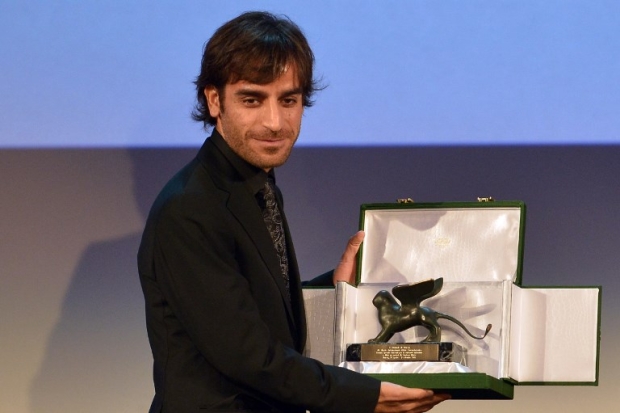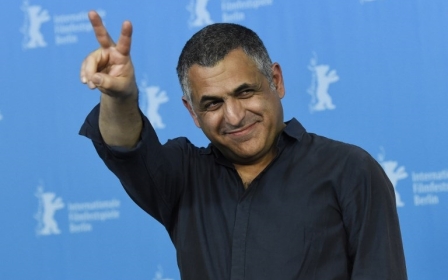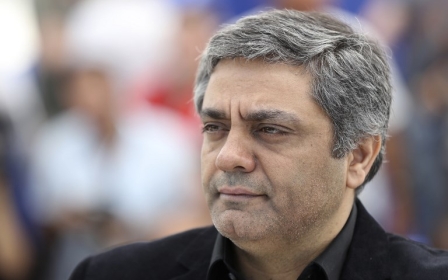Meet Iran's genre-smashing filmmaker Shahram Mokri

BERLIN - The fleeting moment went unnoticed by foreign film commentators. In 24 Frames, the last film by the late Abbas Kiarostami, often hailed as Iran’s greatest filmmaker, the director places a note that is written in Farsi underneath a tree. It is a tribute to the person whose name is inscribed on it.
The note reads "Shahram Mokri", and refers to one of Iran’s most exciting new talents whose second feature Fish & Cat Kiarostami highly admired. The soft-spoken Mokri has never pointed out this heartfelt tribute in any interview to date, refusing to bring attention to himself.
If your movie is liable to simple categorisation or branding, it means it’s empty. When it’s crammed with a dense volume of conventions and references, it means it’s empty
- Shakram Mokri, director
On paper, Mokri’s cinema could not be more different from Kiarostami's Taste of Cherry and Close-Up. While Kiarostami has often been regarded as the grand chronicler of post-revolution Iranian life, having created a body of work abundant in subtle social commentary and symbolism, Mokri cemented his reputation as the country’s first genre director with a small oeuvre rooted in both American indie cinema and modernist European aesthetics.
Yet when taking a closer look, more similarities arise. Both filmmakers present atypical representations of reality; both envelop everyday experiences in unusual, evolving contexts; both blend their inherently Iranian aesthetics with European cinematic traditions; and both are distinguished for their singular, radical visions.
A dystopian vampire movie
Mokri’s originality and audacity were duly recognised, as his second film Fish & Cat won a special prize at the 2013 Venice Film Festival, where it premiered. It was also a commercial success in Iran, presenting young audiences a new vehicle to see themselves in.
Filmed in one single 130-minute shot, Fish & Cat revolves around a number of middle-class students who find themselves as targets for two murderous rural chefs in a remote kite camp.
During an interview with Middle East Eye, Mokri said that the genesis of his unbroken long shots is not derived from a new cinematic fad, but originated in a desire to explore the relationship between different media.
In Iran, men and women are seated separately in sports arenas. I wanted to change this idea in here. When the sister storms into this male-dominated space, she changes all the rules
- Shahram Mokri, film director
“In university, I was always interested in the connection between theatre and cinema,” Mokri said. “This time was a transitional period in cinema: from analogue to digital. I always contemplated what would happen if you put a digital camera in theatre, or what would happen if cinema started digitally. Could it have altered the language of cinema? Would the rules and conventions of film have been changed? This idea propelled us to do some short movies, shot in one long take.”
The film is an unsettling, unclassifiable, dystopian vampire movie that breaks every rule in the horror textbook. It confounds expectations at every turn. Mokri employs its post-modernist design not only to force the audience to question what they’re seeing, but to question what they expect to see.
“If your movie is liable to simple categorisation or branding, it means it’s empty. When it’s crammed with a dense volume of conventions and references, it means it’s empty,” Morki said.
“In Invasion, just when you think you’re seeing a post-apocalyptic movie, it turns into a vampire fable, and vice versa. I wanted to infuse the film with lots of contradictions: nothingness in busy action, maximalism conceived via minimalism,” he added.
Set in what appears to be a futuristic Iran and also filmed in one shot, the film begins as a police procedural thriller of a mysterious murder committed among a squad of an unidentified sport.
The police believe they have arrested the killer, and in order to close the case, they force him to reconstruct the murder. Nothing is what it seems to be in this ambiguous world, and soon, the team members use the investigation to commit more murders, while the sister of the deceased player, who may or may not be a vampire, enters the picture.
If the plot sounds quite convoluted, that is because it was intentionally made that way. The past becomes inseparable from the present as details about the murdered teammate and the sister come to the fore.
Unlike Fish & Cash, where violence is alluded to and barely seen, the gore in Invasion is somewhat more pronounced, but just a dash.
“Invasion is based on traditional Iranian performance, Taziye, a passion play reconstructing the crime scene of the martyrdom of Imam Husayn ibn Ali [the Prophet Muhammad's grandson]. In it, the actors play historical characters who witnessed his murder, and it became a habit [that] they usually get so immersed in their characters that they start to weep,” Mokri said.
In Invasion, just when you think you’re seeing a post-apocalyptic movie, it turns into a vampire fable, and vice versa
- Shahram Mokri, film director
“I’ve tried to redefine the representation of violence in both Invasion and Fish & Cat. In Fish & Cat, the violence occurs off-screen but can be imagined. In Invasion, I felt obliged to show some violence but stop it through concrete physical acts such as removing the dagger from the heart of a character," he added.
All the men in Invasion are less poised than the determined sister, and they operate in hiding while the sister is out in the open about her intentions and nature.
The milieu could be a metaphor for a decaying Iran, where two camps are pitted against one another: the crumbling, weak patriarchy, and the invasive, powerful female force.
Invasion’s carefully constructed set - a grand, cryptic stadium that looks and feels like an infinite labyrinth - reflects the puzzling nature of both structure and characters.
What keeps you fixated on screen is Morki’s absorbing visuals, such as the intriguing relationship of the characters to their surroundings, the brilliantly choreographed action, and the profound political subtext. Frustrating as it may be in parts, Invasion is, nonetheless, a unique work by a filmmaker unafraid to provoke and experiment.
Changing perspectives in time
Born in the Iranian city of Marand, Mokri cut his teeth in filmmaking by editing TV movies, series and documentaries, while directing a number of acclaimed shorts during and after college.
Mokri's debut feature, Ashkan, The Charmed Ring and Other Stories, is a non-linear, tightly plotted, multi-character drama teeming with outsized characters and seeping with the cool and wit of American film icon, Jim Jarmusch.
In the film, two blind robbers, on the verge of committing a heist, exhibit an affinity for genre tropes – a move seldom seen in post-revolution Iranian cinema.
Mokri was greatly influenced by Dutch graphic artist, MC Escher, whom he credits for partially shaping his work.
When filmmakers began to be critical, the authorities reacted antagonistically towards it
- Shahram Mokri, film director
“Escher’s paintings are driven by fantastical perspectives, by shifting perspectives, changing symmetry and impossible objects. I wanted to recreate that in cinema through changing perspectives in time.”
Mokri cites various European filmmakers such as Jean-Luc Godard, Francois Truffaut, and Michelangelo Antonioni among his favourites, yet doesn’t deny his love for American film.
Mokri’s cinema, as he puts it, is a mix between art-house European cinema and American genre film. Both Fish & Cat and Invasion, he believes, are fruits of this eccentric union.
A new trend
Genre filmmaking is largely a new trend in Iranian cinema, a cinematic form Mokri adopted as a reaction to the limitations of the social realism that has defined exported Iranian cinema for more than four decades.
“When the post-revolution social realism started, it was supposed to show the lower classes as this happy breed of people,” Mokri said.
“Of course, that wasn’t the case, and when filmmakers began to be critical, the authorities reacted antagonistically towards it. Iranian social realism was embraced abroad, but at home, it was frowned down upon by the state officials. The audience, though, could identify themselves in that cinema and it became popular.
"For my generation, social realism dominated the entire cinematic landscape, but it lacked imagination and dreams. It was this desire for capturing those dreams that made us want to do something different. Invasion, in many ways, was a reaction against this social realism.”
Invasion, and Mokri’s work by and large, refuses easy political interpretations. Invasion can be seen through a political prism, but only because nearly all art from Iran is political by default.
“In Iran, men and women are seated separately in sports arenas. I wanted to change this idea in here. When the sister storms into this male-dominated space, she changes all the rules.
“We live in a very politicised society,” Mokri said. “Everything we do is considered political. My primary obsession is cinema, not politics. But when you’re living in such a society as ours, maybe everything I do is subconsciously political as well.”
New MEE newsletter: Jerusalem Dispatch
Sign up to get the latest insights and analysis on Israel-Palestine, alongside Turkey Unpacked and other MEE newsletters
Middle East Eye delivers independent and unrivalled coverage and analysis of the Middle East, North Africa and beyond. To learn more about republishing this content and the associated fees, please fill out this form. More about MEE can be found here.





